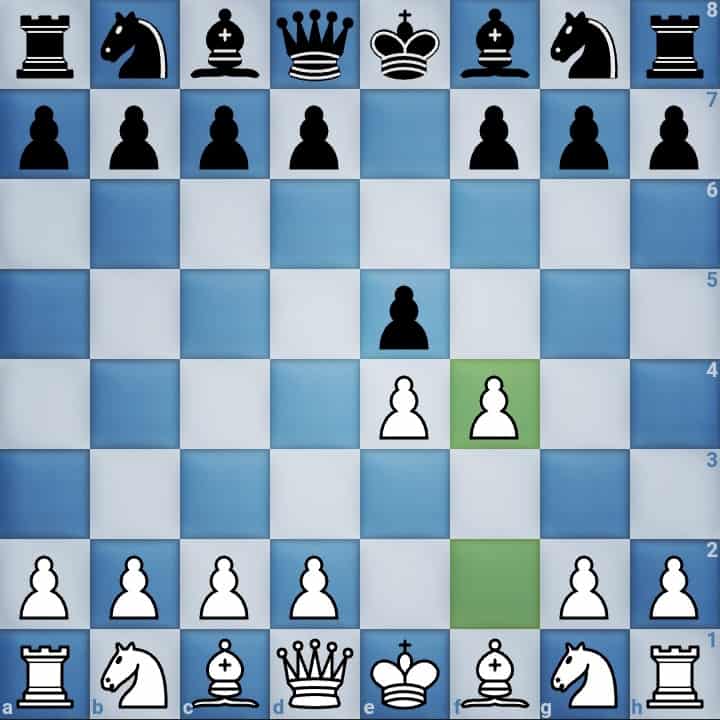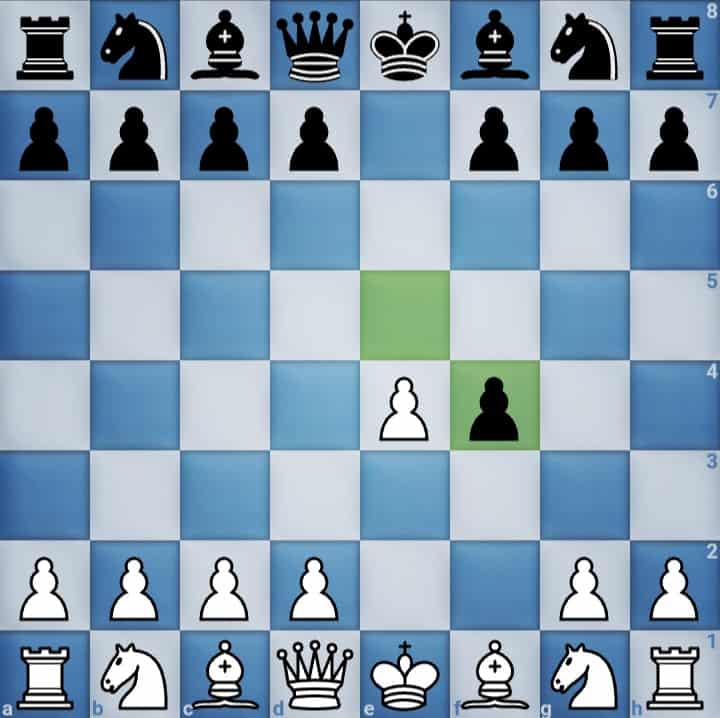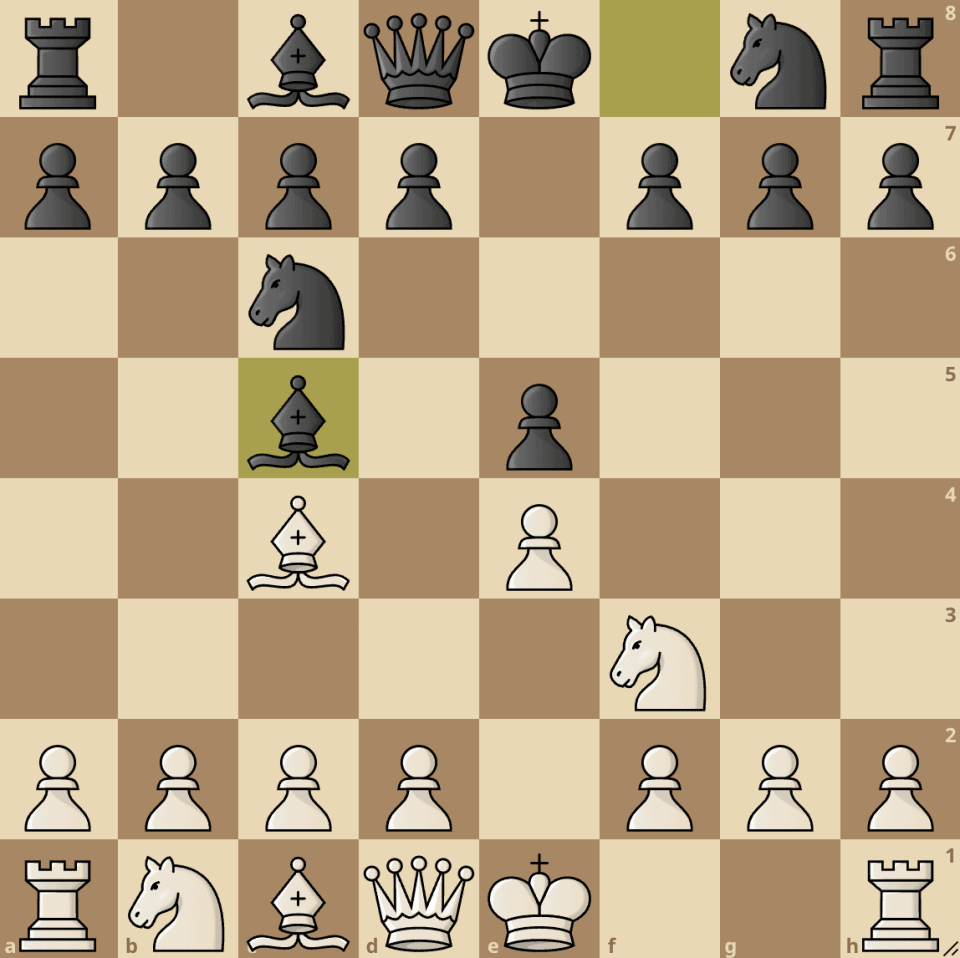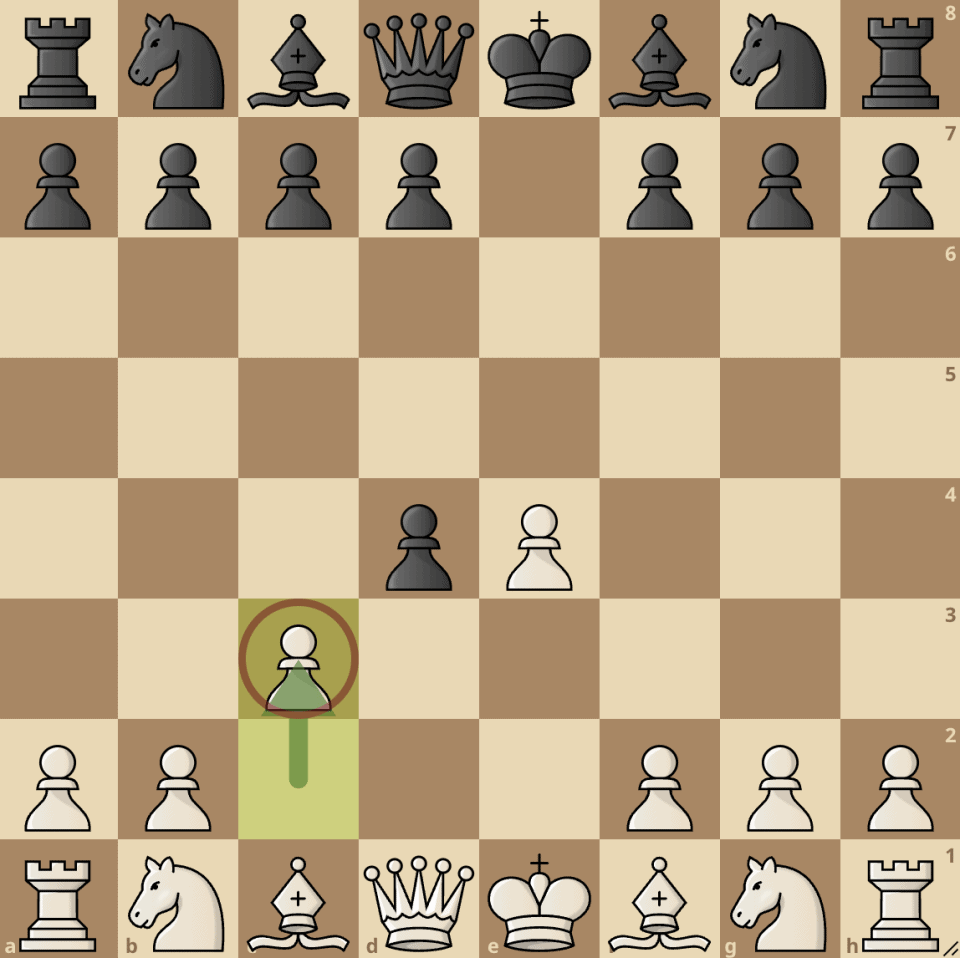You’re an ambitious chess player looking to surprise your opponent and gain an early advantage. You want to play sharp, tactical chess and attack from the very first move. Then the King’s Gambit is the perfect opening for you. The King’s Gambit leads to wildly complex and chaotic positions where creativity is rewarded. It’s an opening for risk-takers and thinkers who want a complex fight, not a long, drawn-out maneuvering game.
Historical Overview Of The King’s Gambit
The historical roots of this opening can be traced back to the early days of chess when the game was still evolving and developing its strategic concepts. The origins of the King’s Gambit can be found in the “Greco Gambit,” named after the 17th-century Italian chess player Gioachino Greco, who was one of the first to popularize this daring opening.
The 19th century saw the King’s Gambit gaining significant popularity, becoming a favorite choice among leading chess players of that era. During this period, players embraced the romantic and adventurous style of chess, and the King’s Gambit fit perfectly into their aggressive playing philosophy.
One of the most notable advocates of the Gambit during the 19th century was Adolf Anderssen, a prominent German chess master known for his attacking prowess. Anderssen’s famous game against Lionel Kieseritzky in 1851, known as “The Immortal Game,” featured a dazzling King’s Gambit that showcased the opening’s tactical brilliance. This historic match is celebrated as one of the greatest attacking games in chess history.
Another influential player who made significant contributions to the King’s Gambit was Paul Morphy, an American chess prodigy and one of the strongest players of his time. Morphy’s creative use of the King’s Gambit in his games added to the opening’s allure and further popularized it among chess enthusiasts.
Throughout the late 19th and early 20th centuries, the King’s Gambit continued to be a favored choice among leading players. However, as chess theory advanced and players began to favor more solid and strategic openings, the popularity of the King’s Gambit started to wane in competitive play. The emergence of new defensive ideas and counterplay options for Black made it more challenging for White to achieve a decisive advantage from the gambit.
Despite its decline in competitive chess, the King’s Gambit has never entirely disappeared. It has retained its appeal as a surprise weapon and a fun opening to play in casual and online chess games. The spirit of adventure and the allure of attacking chances continue to attract chess enthusiasts to explore the intricacies of this historical and daring opening.
In modern times, the King’s Gambit has also experienced a resurgence in popularity among amateur players, with dedicated followers of the opening continuously refining its theory and analyzing new possibilities with the help of computer engines and databases.
What Is The King’s Gambit?
The King’s Gambit is a classic and aggressive chess opening that begins with the moves 1.e4 e5 2.f4. In this opening, White sacrifices the f4 pawn, offering it as a gambit to Black. By accepting the gambit (2…exf4), Black can capture the f4 pawn and gain a material advantage, but at the cost of potentially weakening their own position and the king’s safety.

The main idea behind the King’s Gambit is to prioritize rapid piece development and seize the initiative. White aims to open lines for their pieces, particularly the f1-bishop, for an early attack on Black’s position. This aggressive approach often leads to sharp and tactical positions, demanding precise calculation and tactical awareness from both players.
Variations of The King’s Gambit
The King’s Gambit is a sharp and double-edged opening, leading to various variations and counterplay possibilities for both White and Black. In this section, we will explore some of the main variations of this opening.
Accepted King’s Gambit (2…exf4)

This is the most straightforward response to the Gambit, where Black captures the f4 pawn, accepting the gambit. After 2…exf4, White often plays 3.Nf3, developing the knight and attacking the e5 pawn. Black can now defend the e5 pawn with 3…g5, accepting a weakened kingside structure but gaining a lead in development. Alternatively, Black can opt for 3…d5, leading to the Falkbeer Countergambit, or 3…Nf6, known as the Cunningham Defense.
Declined King’s Gambit (2…d6)

Black can choose not to accept the gambit and instead plays 2…d6, intending to maintain a solid and defensive position. The Declined variation completely avoids the crazy complications posed by the gambit and opts for a more solid structure.
Falkbeer Counter-Gambit

The Falkbeer Counter-Gambit is the bane of the King’s Gambit. When white chooses the King’s Gambit, hoping for an attacking advantage, the Falkbeer Counter-Gambit challenges this notion with aggressive play. It starts with the familiar King’s Gambit lines (1.e4 e5 2.f4), but black responds with d5, creating immediate problems for white. Unfamiliar players can quickly fall into traps, like the move 3.fxe5, which leads to devastating consequences, such as checkmate or severe material loss. The Falkbeer Counter-Gambit offers black a powerful way to counter the King’s Gambit and take control of the game early on.
Principles And Main Ideas Behind The King’s Gambit
The Gambit Concept
A gambit is a chess opening in which a player willingly sacrifices material, usually a pawn, in exchange for strategic or tactical advantages. In the King’s Gambit, White offers the f4 pawn as a sacrifice to create an open line for the f1-bishop and to gain rapid piece development. By accepting the gambit (2…exf4), Black can win the extra pawn but risks falling into a position with weaknesses, open lines, and exposed king safety.
Open Game
The King’s Gambit leads to an open game, characterized by early pawn exchanges and open lines for pieces. The dynamic nature of the opening makes it suitable for players who enjoy tactical battles and attacking chances.
Central Control
By playing 2.f4, White aims to control the central e5 square with the pawn on f4. This central control allows White to exert pressure on Black’s position and opens possibilities for the development of pieces to active squares.
Rapid Piece Development
One of the primary ideas behind the King’s Gambit is to develop the pieces quickly and harmoniously. After 2.f4 exf4, White can develop the kingside bishop with Bc4, and the queen’s knight with Nf3, potentially followed by kingside castling. This rapid development puts pressure on Black, who must respond accurately to avoid falling behind in development.
Aggressive Play
The King’s Gambit is associated with aggressive and imaginative play. Players who enjoy attacking chess and creative combinations are often drawn to this opening due to its potential for tactical fireworks.
Tactical Complexity
The King’s Gambit leads to tactical complexities and sharp positions where players must calculate accurately to navigate through the intricacies of the opening. Tactical awareness and a sharp eye for combinations are essential for both sides.
Dynamic Compensation
By sacrificing a pawn, White aims to compensate for the material deficit with a dynamic and initiative-driven position. The pressure on Black’s position and the attacking chances create practical challenges for the opponent to handle.
Strategic Aspects of The King’s Gambit
The King’s Gambit is an opening that revolves around aggressive and dynamic play, aiming to seize the initiative and launch a rapid attack against Black’s position. Understanding the strategic aspects of the gambit is essential for players who wish to employ this daring opening successfully:
Rapid Development
By sacrificing the f4 pawn, White aims to accelerate the development of their pieces. The early move 2.f4 not only opens lines for the bishops and the queen but also allows for quick development of the kingside pieces. This leads to a coordinated attack, putting immediate pressure on Black’s position.
Attacking Opportunities
The main strategic goal of the opening is to create attacking chances against Black’s king. The rapid development and central control offer the potential for threats to emerge along open files and diagonals, creating tactical complications that can catch unprepared opponents off guard.
Unbalancing the Game
By sacrificing a pawn early on, the King’s Gambit leads to an unbalanced position. This unbalancing effect makes the game highly dynamic and forces both players to tread carefully through tactical minefields. The resulting complexity can favor the more experienced player or the one who is better prepared in the variations.
Initiative and Pressure
The King’s Gambit gives White the initiative, meaning they dictate the flow of the game and set the agenda. White’s aggressive play exerts constant pressure on Black, who must find accurate moves to defend against the impending threats.
Psychological Impact
The King’s Gambit can have a strong psychological effect on the opponent. Facing an early pawn sacrifice and an aggressive onslaught can be daunting, especially for players who are not well-versed in the intricacies of the opening. This can lead to mistakes or hesitant play by Black, giving White additional opportunities to capitalize on the initiative.
Challenges Posed By The King’s Gambit
Despite its strengths, the King’s Gambit is not without its strategic challenges, the challenges include:
Counterplay for Black
Black has several options to counter the King’s Gambit and equalize the position. Accepting the gambit can lead to dangerous positions for Black, but they can also decline the gambit, leading to more solid setups that negate White’s aggressive intentions.
Long-Term Material Disadvantage
By sacrificing a pawn, White will eventually face a material deficit if Black manages to consolidate their position. White must ensure that the pressure and attacking chances compensate for the loss of material.
Proper Preparation
Successfully executing the King’s Gambit requires deep knowledge of the opening’s various lines and counterplay options. Lack of preparation can lead to inferior positions or even outright losses.
Conclusion
So there you have it, a quick introduction to the King’s Gambit. Now you’re armed with some new strategies and ideas to unleash on your next opponent. Remember, the King’s Gambit is all about attacking aggressively and keeping up the pressure. Play boldly, take calculated risks, and have fun with it! Your opponents won’t know what hit them.






join the conversation